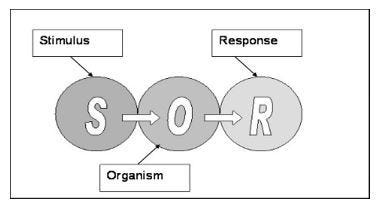
At least three times a day during this week, perform an S-O-R black box analysis on yourself. Observe what you are doing (especially in terms of the products and services you are using or purchasing). Identify the role of the stimuli and organismic background factors in influencing these behaviors and decisions.
Conducting an S-O-R black box analysis on myself three times a day provided me with valuable insights into my behaviors and decisions in terms of the products and services I use or purchase (John, 2021). After performing this analysis at least three times a day during the last week, I could find out what my typical day was like and how it affected my purchases.
In the morning, I started my day by checking my smartphone for messages and updates from different online platforms including social media ones and online stores. My stimuli there were the notifications that grabbed my attention, while my organismic background urged me to stay informed about the status of my recent purchases and check whether anyone sent me messages to be aware whether anything happened or if anyone needed my urgent response.
At lunchtime, I always browse the Meituan app to order food. As soon as I got used to the pictures that looked completely different from the dishes there, my stimuli included reviews and descriptions of them, while my organismic background factors were hunger and taste preferences.
Finally, in the evening I watched movies together with my boyfriend. The appealing content, good actors, and interesting trailers serve as stimuli that influence my choices. At the same time, the huge role is played by my organismic background factors – for example, my relaxation needs and my mood.
Stimuli play a crucial role in shaping my behaviors and decisions (John, 2021). For the last 7 years I’ve been living in China, where most of the common platforms (such as all Google services, Yahoo services, Facebook services, Twitter, WhatsApp, etc.) are banned from use. However, I learned how to use local services and social media platforms like WeChat, Weibo and Taobao to me act as stimuli, constantly bombarding me with advertisements and promotions for various products and services. These stimuli can trigger my interest and desire to explore and potentially purchase new products. For example, if I come across an ad for a new hair care product claiming to have natural ingredients and positive customer reviews, it might stimulate me to consider trying it out.
Economic factors also act as stimuli and influence my decisions (John, 2021). For example, I joined a group on WeChat with tons of coupons with discounts on Taobao. Whenever I check this group and find really good offers, it may prompt me to make a purchase even if I never thought of buying something like that right now. Similarly, if I go shopping and the salesman tells me that if I buy 2 boxes of my chosen product I can get the third box for free, it could stimulate me to buy more goods than I planned.
Organismic background factors also impact my decisions and behaviors a lot. For example, my personal preferences can determine what products I choose. If I need some stress relief while choosing a new game for my VR set I will consider some more or less casual games, but if I am in the mood to get the adrenaline burst I can end up choosing some horror games or difficult quests.
In China, the concept of “face” or social reputation is significant. Therefore, cultural and societal influences can shape my decisions and behaviors, too. Sometimes I can choose to buy products of famous brands even if I believe that they are not worth that, simply to be associated with some kind of status. Additionally, the stimuli can appear in the form of recommendations from trusted individuals.
Finally, my personal beliefs and values can affect my consumer choices and decisions. For example, if I see the same product that is sold by different companies, I will consider other factors such as eco-friendliness, sustainability, and so on.
References
John. (2021, November 7). Black Box Model Of Consumer Behavior Explained. Retrieved from https://neostrom.in/black-box-model-of-consumer-behavior/
